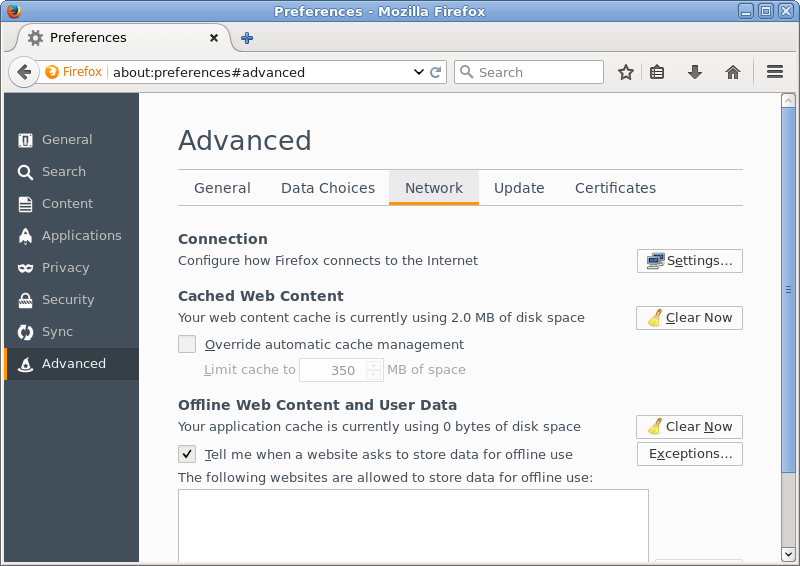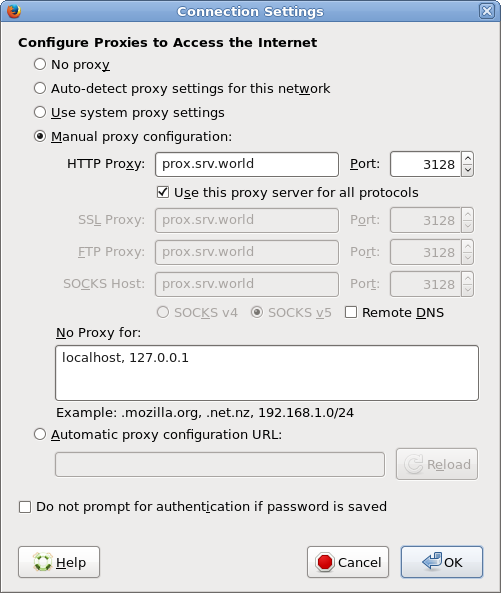|
Proxy Client : CentOS
2014/08/12 |
|
Configure Proxy Client to connect to the Proxy server.
|
|
| [1] | Configure proxy settings like follows on CentOS Client. |
|
[root@client ~]#
vi /etc/profile # add follows to the end (set proxy settings to the environment variables)
MY_PROXY_URL="http://prox.srv.world:3128/"
HTTP_PROXY=$MY_PROXY_URL
HTTPS_PROXY=$MY_PROXY_URL FTP_PROXY=$MY_PROXY_URL http_proxy=$MY_PROXY_URL https_proxy=$MY_PROXY_URL ftp_proxy=$MY_PROXY_URL
export HTTP_PROXY HTTPS_PROXY FTP_PROXY http_proxy https_proxy ftp_proxy
[root@client ~]#
source /etc/profile
# it's OK all, but it's possible to set proxy settings for each application like follows # for yum
[root@client ~]#
vi /etc/yum.conf # add to the end proxy=http://prox.srv.world:3128/ # for wget
[root@client ~]#
vi /etc/wgetrc # add to the end http_proxy = http://prox.srv.world:3128/ https_proxy = http://prox.srv.world:3128/ ftp_proxy = http://prox.srv.world:3128/ |
|
Proxy Client : Windows
|
|
Configure proxy settings like follows on Windows Client.
|
|
| [2] | For exmaple on Firefox, Open [Edit] - [Preference] and move to [Advanced] - [Network] tab. |

|
| [3] | Check a box "Manual Proxy Configuration" and input your server's hostname or IP address. It's OK, it's possible to access to the web via proxy server. |

|